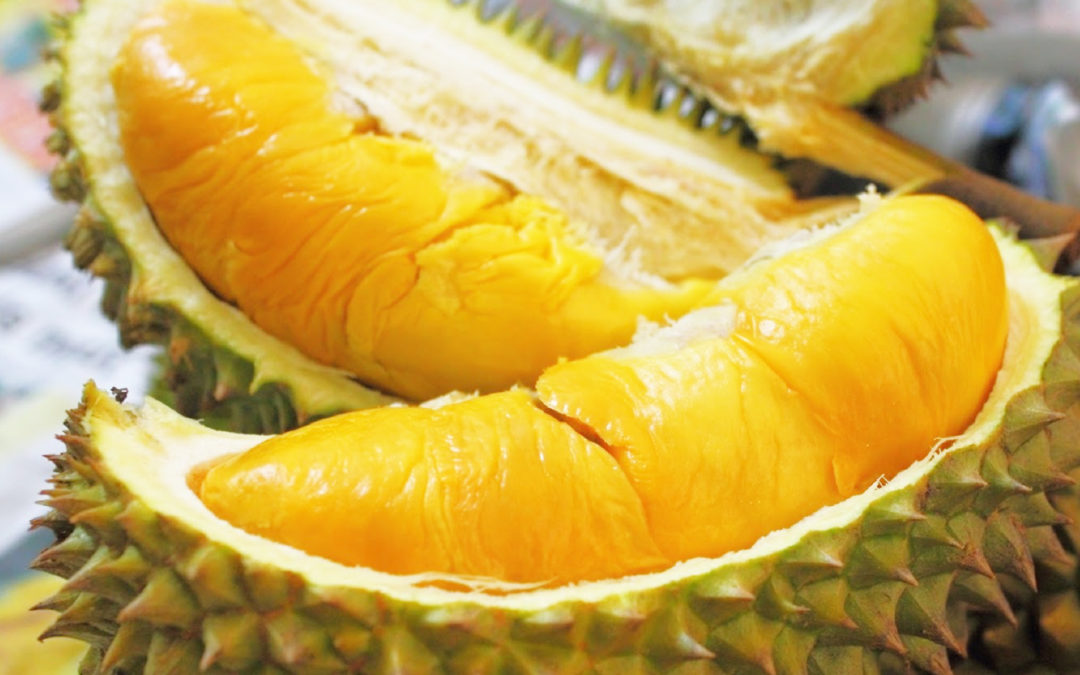In the recent months, the price of durian in Singapore has increased. Generally, the durians are imported from Malaysian farmers. However, there has been a growing trend of Malaysian suppliers exporting durians to China.
Hail the king of all fruits
Mao Shan Wang (also known as Rajah Kunyit or Musang King) durians are popular amongst many durian lovers, given its creamy texture, bittersweet taste, and small seeds. However, due to an increase in demand of the ‘King of fruits’, prices of durians have followed suit. In 2012, Mao Shan Wang durians were priced at $8/kg while In 2016, the same durians were almost twice as expensive, at $15/kg.
Shrinking supply of durians
Malaysian farmers are shifting their export focus to China which has led to a subsequent decline in durian export to Singapore. As a result, supply of durian in Singapore has shrunk substantially.
Furthermore, recent shifts in weather patterns in Malaysian states, such as Penang and Johor Bahru (JB), have disrupted the harvest cycles in durian plantations, leading to increase in supply of durians at a slower rate. Founder of Tasty Durian Pte Ltd, Mr. Liam, complained that peak durian seasons have been in a disarray.
“Usually, the peak season starts from May to August. This year, the cycle began much earlier, from February. This shift is possibly due to the weather changes in JB.”, lamented Liam.
The durian craze continues
There is an upward trend in number of Chinese tourists who patronise the durian farms in Malaysia. From 2006 to 2016, the number has increased from hundreds to thousands.
Experts have pointed that the rising affluence of the Chinese have led to an increase in tourism, especially in neighbouring countries, particularly Malaysia. From 2014 to 2017, the sales from Chinese tourists spending has risen from 10% to 35%. Given the growing spending power of the Chinese, durian sellers have observed that these tourists buy the ‘king of fruit’ in bulk.
Nevertheless, the rising price of durians has not deterred durian lovers in Singapore from enjoying their annual gatherings. Lee Xuan Hui, 25, said: “My family and I have been holding durian gatherings for eight years. We will still eat them even though the price has increased.”
Questions
- (i) Using demand analysis, identify and explain the factors that led to the surge in price of durians
(ii) Using supply analysis, identify and explain the factors that led to the surge in price of durians - With the aid of an economic diagram, illustrate the increase in price of durians.
- Explain why the price of durians increased despite “an increase in supply of durians at a slower rate”.
- Using elasticity concepts, give possible reasons why Chinese tourists increase their purchases of durians in spite of a rise in durian prices.
- Discuss whether the demand or supply factors are more important in determining the price of durians.
- Using the theory of price elasticity of demand, suggest how durian sellers are able to increase their total revenue.
Type
JC Economics CSQs
Chapter
- Microeconomics
- Theory of Demand and Supply
- Price Elasticity of Demand and Supply
Reference
Demand for Malaysian durians in China may mean fewer, costlier fruit for Singapore
, Channel News Asia


